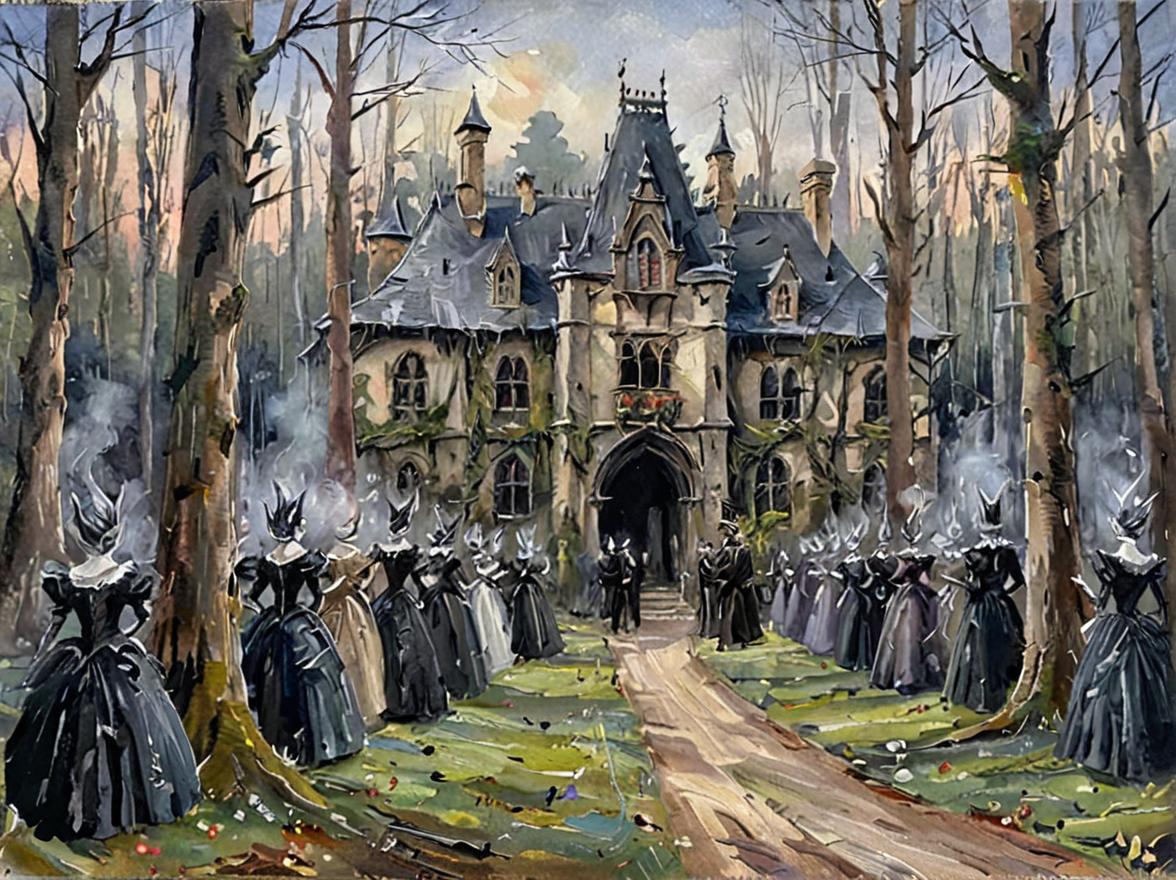When night falls and shadows grow long, our ancestors didn’t reach for their phones to scroll mindlessly through social media. Instead, they gathered around crackling fires and shared stories of creatures that lurked in the darkness beyond. These weren’t just tales to frighten children—they were warnings, explanations for the unexplainable, and ways to make sense of a world full of mystery and danger.
I’ve always been fascinated by these dark corners of folklore, where the veil between our world and the supernatural grows thin. So grab a warm drink, dim the lights, and join me as we explore some of Europe’s most terrifying mythical beings that have haunted our collective nightmares for centuries.
1. The Nuckelavee (Scotland)
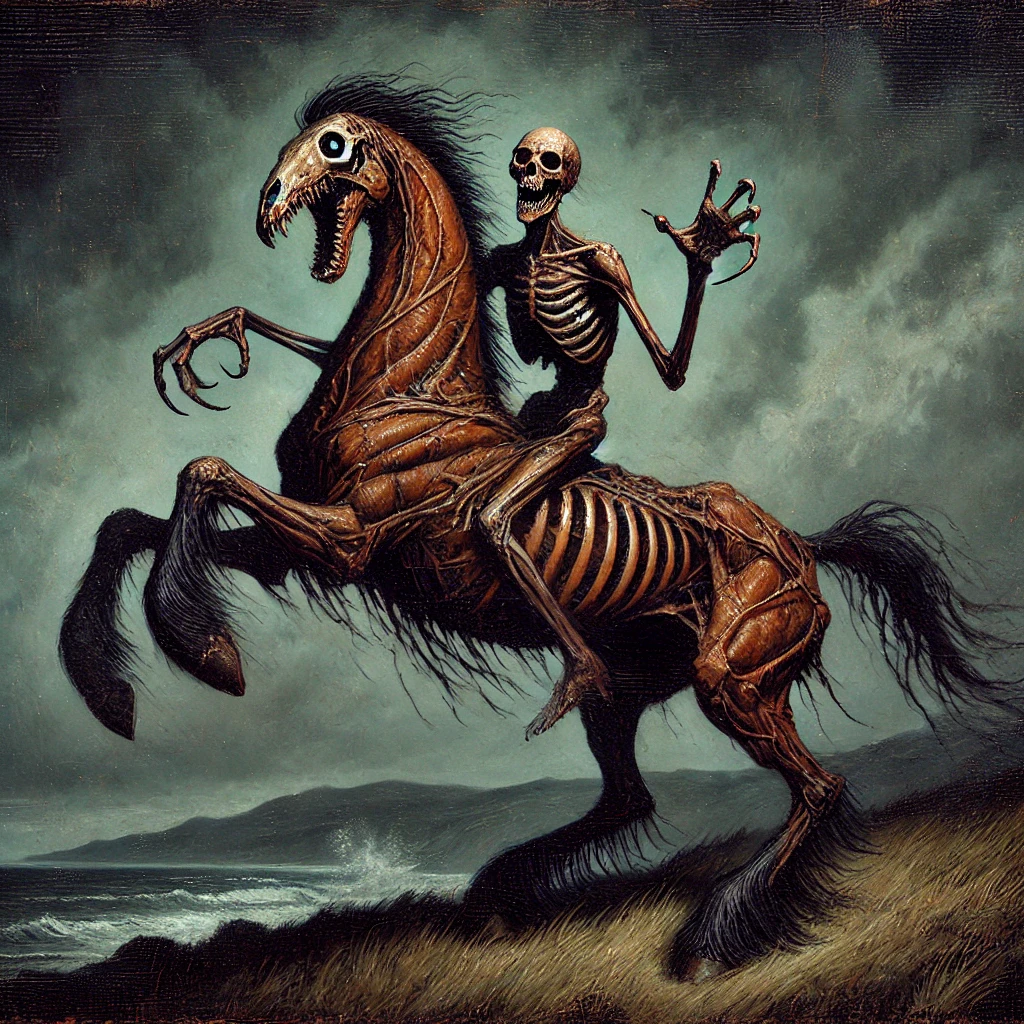
Picture this: you’re walking along a fog-shrouded coast when you hear hooves on wet earth. From the mist emerges a nightmare — a horse and rider fused into one skinless, pulsing body. Folklore encyclopedias sometimes list the Nuckelavee as Irish, but its roots lie in the Orkney Islands of Scotland, where it was feared above all other spirits.
The human torso grows out of the horse’s back, muscles exposed, black blood showing through veins with every movement. Its breath spreads disease, blights crops, and kills livestock. Nothing can stop the Nuckelavee — except fresh water. A river or stream is enough to halt its advance. Cross the water and you live. Fail, and the Nuckelavee’s poisonous breath finds you in the dark.
2. Baba Yaga (Slavic)
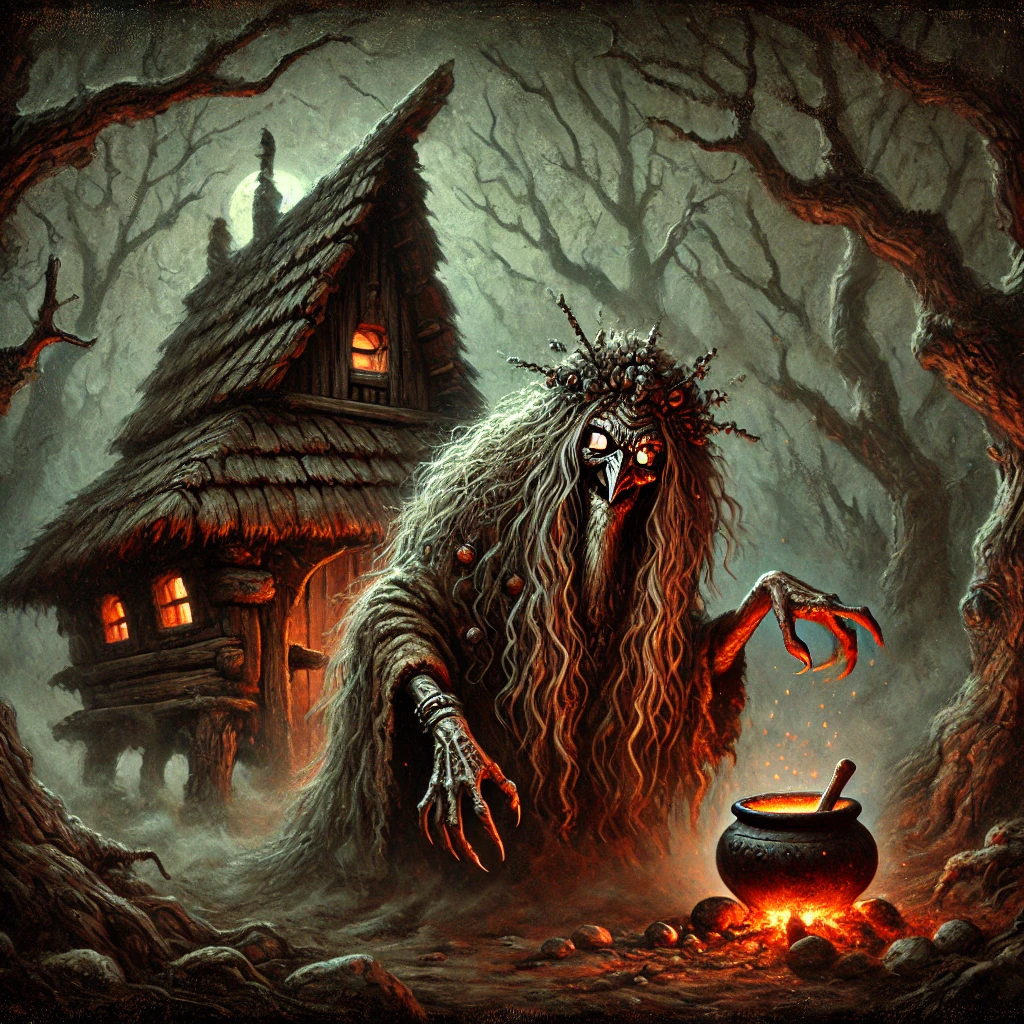
Deep in the forests of Eastern Europe lives Baba Yaga, the witch whose hut stands on giant chicken legs and dances or turns at her command. She flies through the night in a mortar, steering with a pestle and sweeping away her tracks with a birch broom so no one can follow.
Some say her fence is built from human bones, the skulls crowning it glowing in the dark. She can be wise or murderous, a guardian of knowledge or a devourer of children. Travelers seeking her help must be polite, clever, and unafraid—because Baba Yaga might offer guidance… or put you in the pot. With her, the line between blessing and doom is razor-thin.
3. The Black Annis (England)

In the forests of Leicestershire lurks Black Annis, a blue-skinned hag with iron claws and a taste for human flesh. At night, she was said to crawl from her cave — Black Annis’s Bower — and reach through windows to snatch children from their beds. The skins of her victims hung from her belt or on the walls of her cave, drying in the wind.
Parents warned children to be home by sunset, or Black Annis would find them in the dark. Some antiquarian writers tried to trace her back to an ancient Celtic goddess, but she survives most strongly as a local terror: a nightmare in the trees, waiting for the unwary.
4. The Erlking (Germanic)
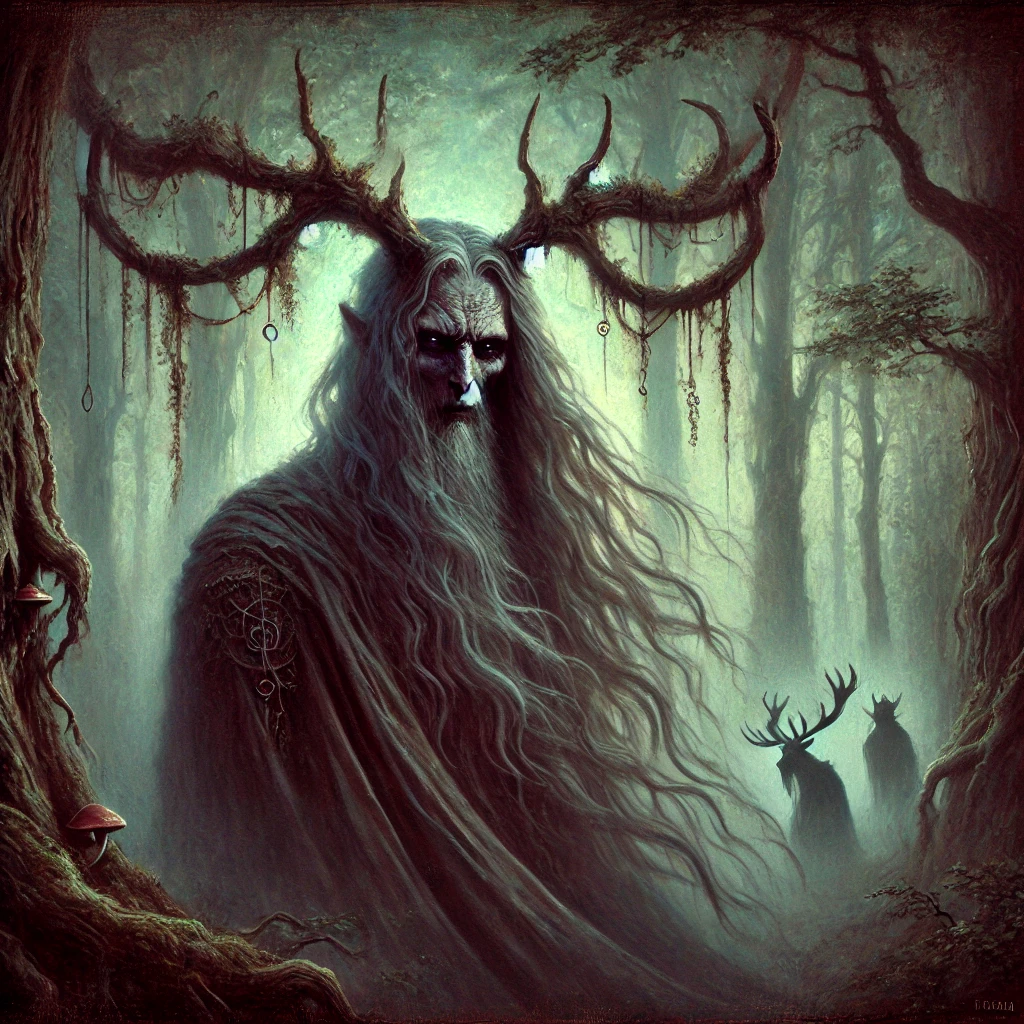
Perhaps one of the most psychologically terrifying figures in folklore, the Erlkönig — often called the Erlking in English — preys on children. His legend became famous through Goethe’s poem and Schubert’s haunting musical setting, where he appears as a beautiful, seductive presence whispering promises in the dark.
He is not a monster in the traditional sense. He wears a crown, moves with eerie grace, and speaks gently, coaxing children away from safety. The horror lies in his invisibility: only the victim can see or hear him. To everyone else, the child seems delirious, frightened of nothing at all. By the time a parent realizes something is wrong, the Erlking has already claimed his prey.
The name “Erlkönig” originated with a mistranslation of the Danish word ellerkonge — the Elf King. But mistranslated or not, the stories all agreed on one thing: he comes for the young, and he never leaves alone.
5. The Mari Lwyd (Wales)
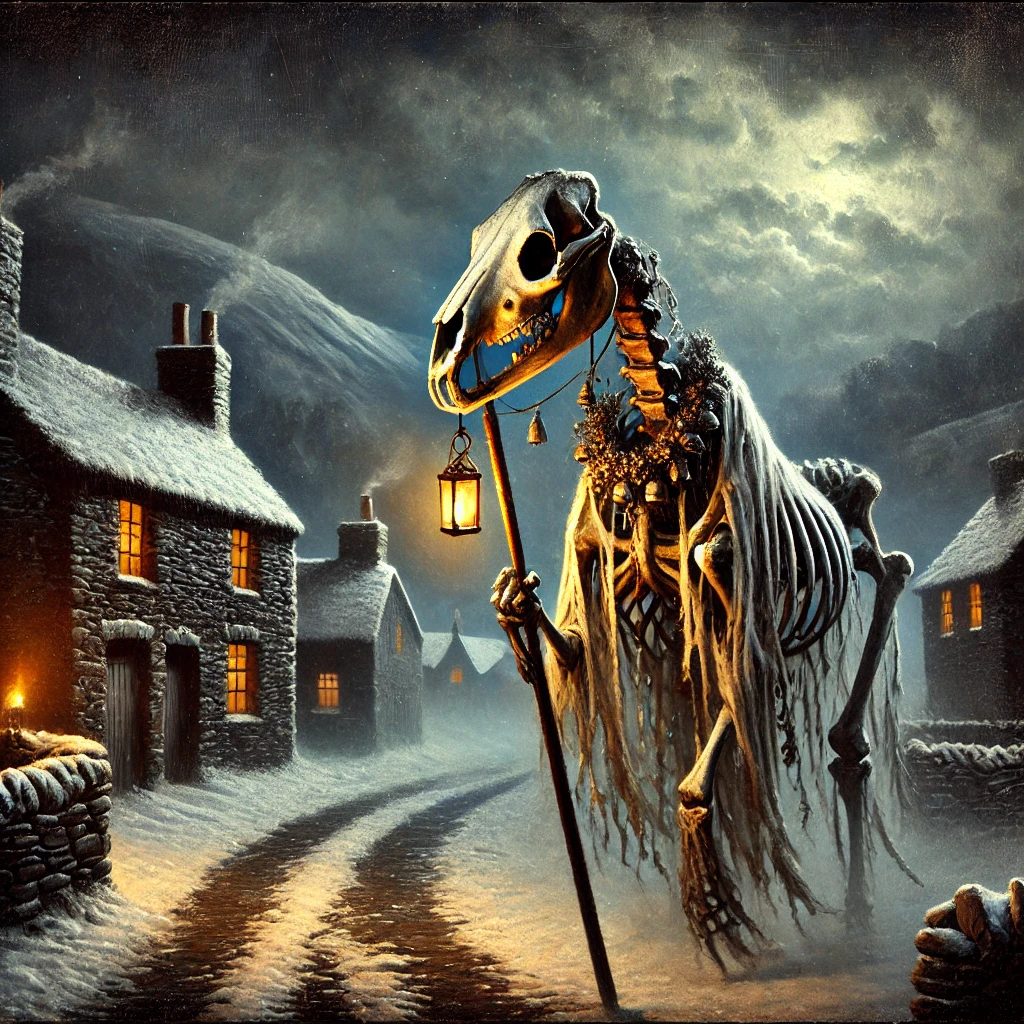
Imagine walking down a dark Welsh lane in winter when you encounter a horse’s skull—adorned with ribbons and bells—mounted on a pole, draped in a white sheet, and carried by a person hidden beneath. This is the Mari Lwyd, a midwinter tradition that blurs the line between festivity and terror.
The Mari Lwyd party travels from house to house, demanding entry through song. Homeowners must answer with verses of their own in a battle of wits called pwnco. If the Mari Lwyd wins, she earns the right to enter, where the group receives food and drink. Though technically a folk custom rather than a creature, there’s something deeply unsettling about a skeletal horse that arrives at your door, singing for admission as if risen from the grave.
6. The Alp (Germanic)

In early Teutonic mythology, the Alp (also Alb) was not merely a nightmare spirit—it was part dwarf, part elf, and part minor god. Some traditions described the Alps as skilled workers of metal who lived in the deep stone of the mountains. Over centuries, this noble origin eroded. In later Swiss and German folklore, the Alp became something darker: a night-demon blamed for illness, bad dreams, and suffocation during sleep.
The Alp is a shapeshifter. It may come as a dog, cat, mouse, snake, bird, or even a drifting mist before settling upon its victim. Most famously, it presses against the chest, leaving the sleeper paralyzed and unable to breathe—a terror now recognized as sleep paralysis, but long attributed to supernatural attack.
One of its defining traits is its Tarnkappe, a magical cap that grants invisibility or the ability to change shape. The cap must remain with the Alp; without it, the creature is powerless.
As for where Alps come from, folklore offers uneasy answers. Some are the spirits of the dead, especially those improperly buried. Others are living people whose souls slip from their bodies at night, tormenting neighbors without ever knowing. The implication was chilling: anyone could become an Alp—alive or dead—if fate or ritual failed them.
7. The Strigoi (Romanian)

Before the modern vampire found its way into fiction, rural Romania already feared the Strigoi—restless dead who rose from the grave to drain the vitality of the living, especially their own family. Some were the spirits of the dead (strigoi morți); others were the living whose souls slipped from their bodies at night (strigoi vii), wandering as animals or smoke.
A person might become a Strigoi if they lived a cursed life, died violently, were buried improperly, or carried certain signs at birth—such as being born with a caul or an extra nipple. In some regions, dying unmarried was also believed to leave a soul vulnerable to unrest.
Preventive rites were serious. Mourners might place iron nails, needles, or thorns in the coffin, tie the jaw shut, or drive a stake through the heart to ensure the dead stayed dead. These beliefs were strong enough that well into the 19th and 20th centuries, villagers occasionally exhumed suspected Strigoi to perform anti-vampiric rites.
Unlike the elegant vampire of literature, the Strigoi is a folk creature—unclean, hungry, and bound to the family it once had. It did not hunt strangers. It came home.
8. The DullahanLeshy (Ireland)
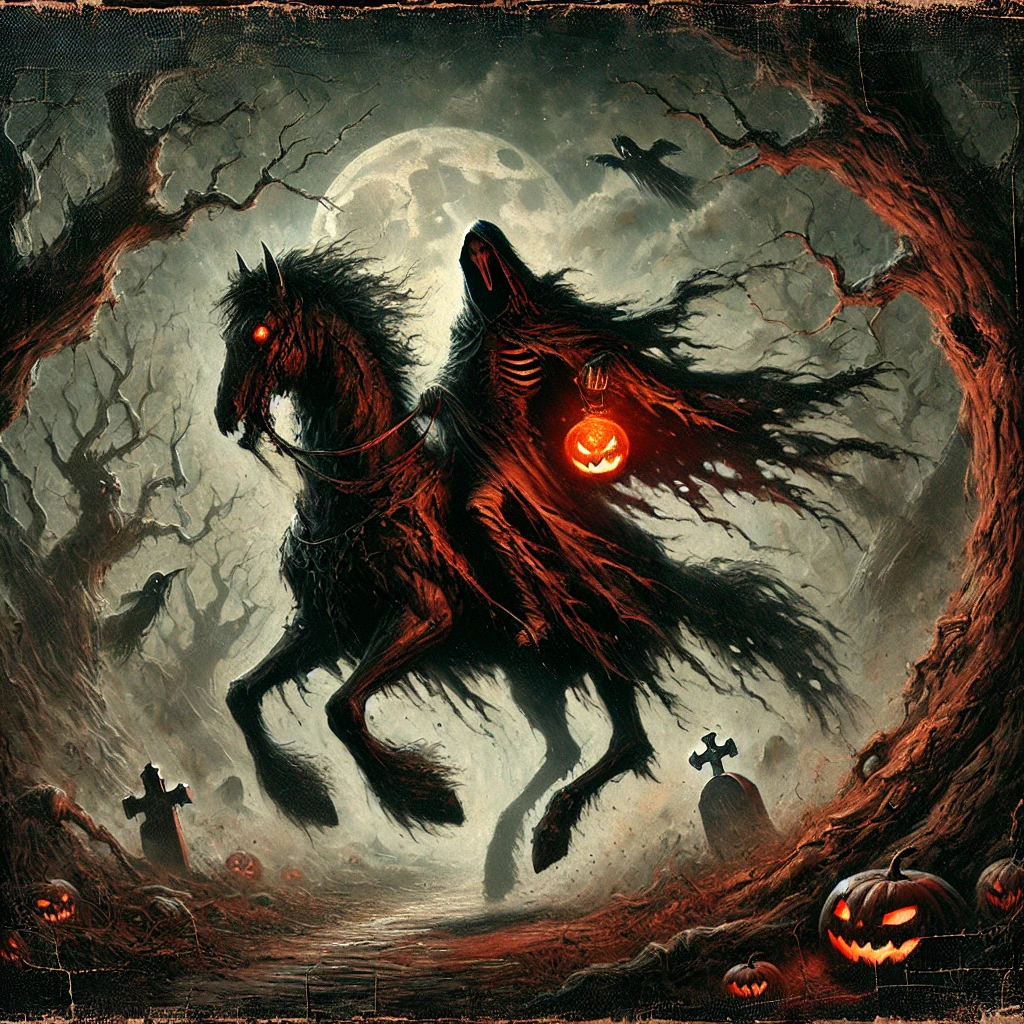
Imagine a headless horseman riding the Irish countryside, holding his severed head in one hand. This is the Dullahan, one of Ireland’s most terrifying death-omens. His head is said to have decaying flesh, dark rolling eyes, and a terrible grin. In some traditions, he is not a ghost at all, but a type of solitary fairy — malicious like the Cluricaune — who rides the night roads to terrify travelers.
The Dullahan speaks only once: to call the name of the person whose life is ending. When he stops riding, someone dies. No gate, lock, or wall can bar his way — they burst open at his approach. In many tales, he carries a whip made from a human spine. If a living person witnesses him pass, he may lash out and blind them, or throw a basin of blood as a warning of death.
There is only one defense against him: gold. Even a small piece may drive him away.
9. The Draugr (Norse)
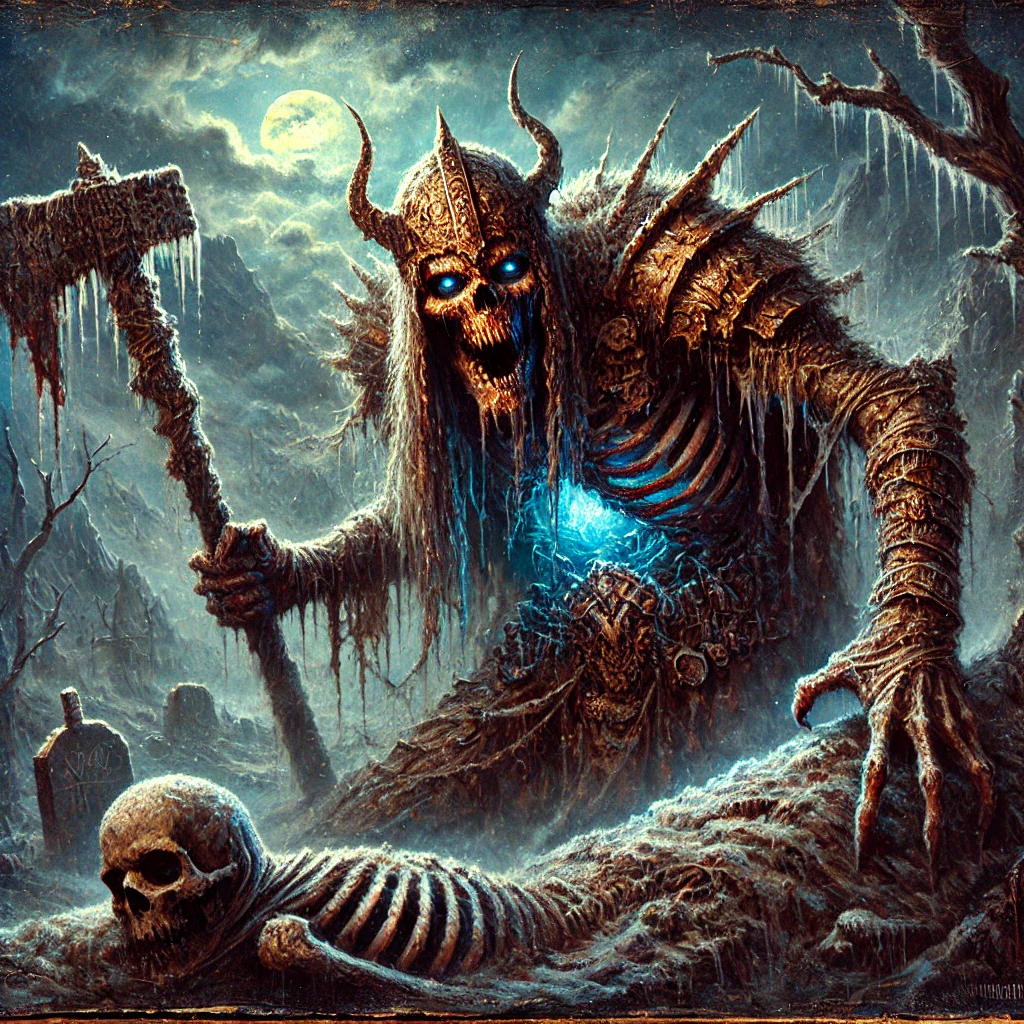
Long before zombies lurched into pop culture, the Vikings feared the Draugr—undead beings who kept their intelligence, memories, and a hatred for the living. Unlike mindless corpses, a draugr could scheme, stalk, and hold grudges.
These revenants possessed immense strength and could swell to monstrous size, crushing men beneath their weight. Many could shapeshift, taking the form of animals or drifting like smoke from their burial mounds. They guarded grave treasures fiercely, attacking anyone who dared disturb them. Some wandered from their tombs to torment the living—slaughtering livestock, dragging the living from their beds, or driving people mad with terror.
Draugr did not rise by accident. They often returned because of greed, jealousy, or vengeance. Death made them stronger, not weaker. In a world where the grave was supposed to be the end, the draugr was a reminder that some enemies followed you into the dark.
10. The Leshy (Slavic)

Deep in the forests of Russia lives the Leshy — a nature spirit who guards the wild places and the animals that dwell there. To see him from a distance, he looks like a man, but wrong somehow: with pale skin, tangled hair, and a beard the color of moss. His eyes are green, his boots are on the wrong feet, and he casts no shadow at all. In some tales, his skin is bark-gray, and his veins are filled with sap instead of blood.
The Leshy is a shapeshifter. He can grow as tall as the pine trees or shrink to the size of a blade of grass. He knows every sound of the forest — the rustle of leaves, the cry of birds, the groan of branches — and he uses them to deceive travelers. Sometimes he takes the shape of a wandering peasant, offering helpful shortcuts that end in swamps, bogs, or endless circles through the trees. Once the victim is lost, the Leshy vanishes laughing.
There is usually one Leshy to each forest, with a wife called Lesovikha and children known as Leshonki. Some are mischievous tricksters; others are hostile. A particular kind, the Zuibotschnik, is said to imitate the sound of a baby gurgling high in the branches to lure the curious deeper into danger.
Herdsmen and hunters once offered salt and bread to stay in the Leshy’s good graces. Another defense was imitation: turning one’s clothing or boots backwards, just as he does, to confuse him long enough to reach the forest’s edge safely.
He is not a ghost and not a demon. The Leshy is the forest made conscious — ancient, indifferent, and amused by human fear.
P.S: Folklore is regional and layered across centuries. Many of these figures appear in multiple forms depending on local belief. The accounts here reflect documented traditions recorded by folklorists and ethnographers.



